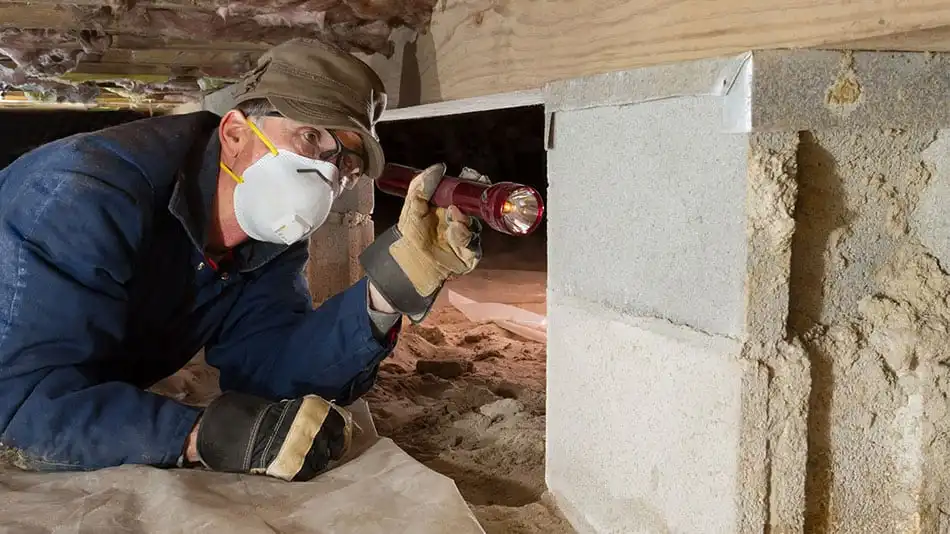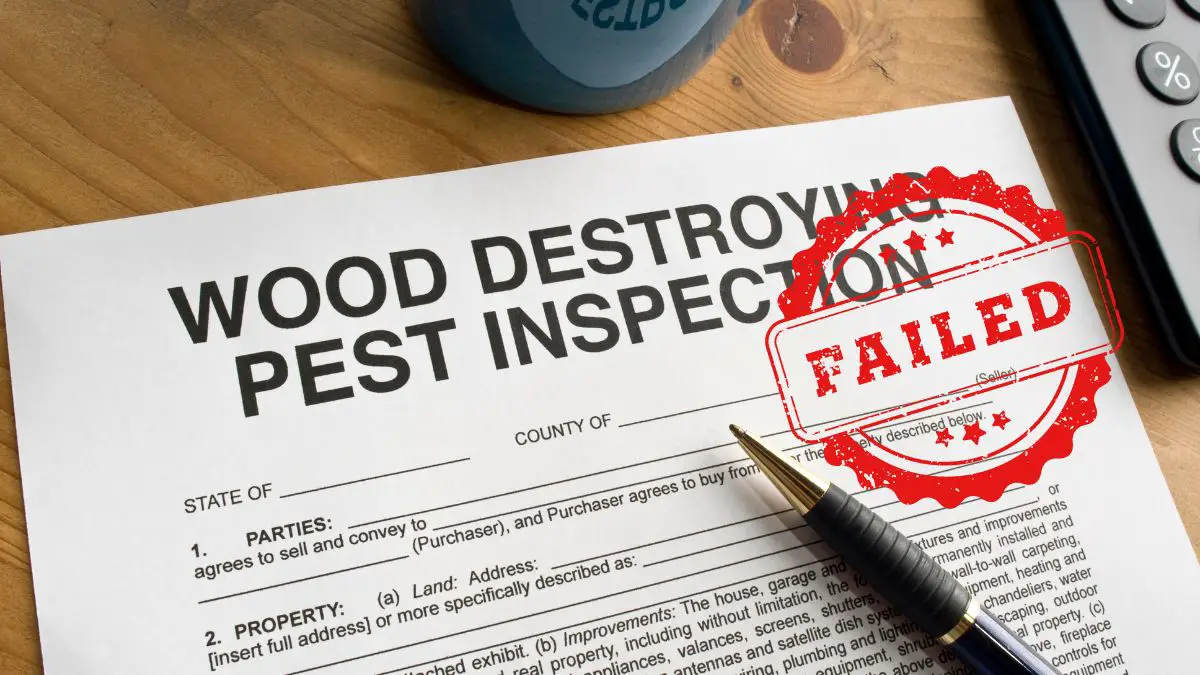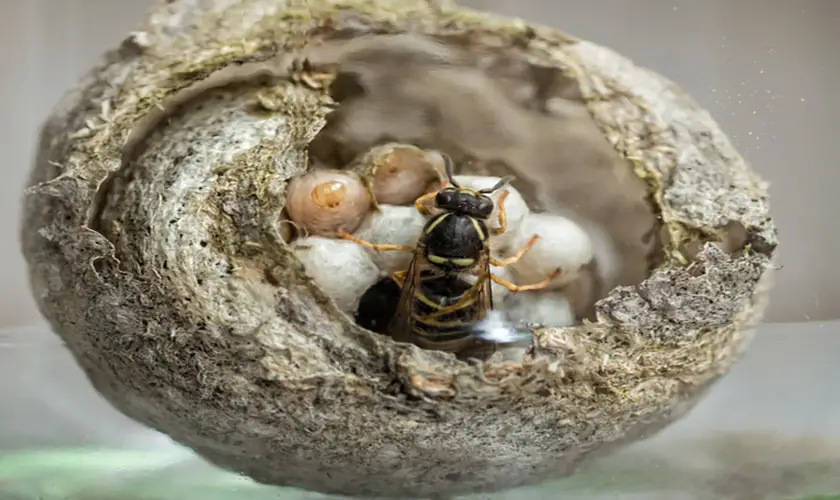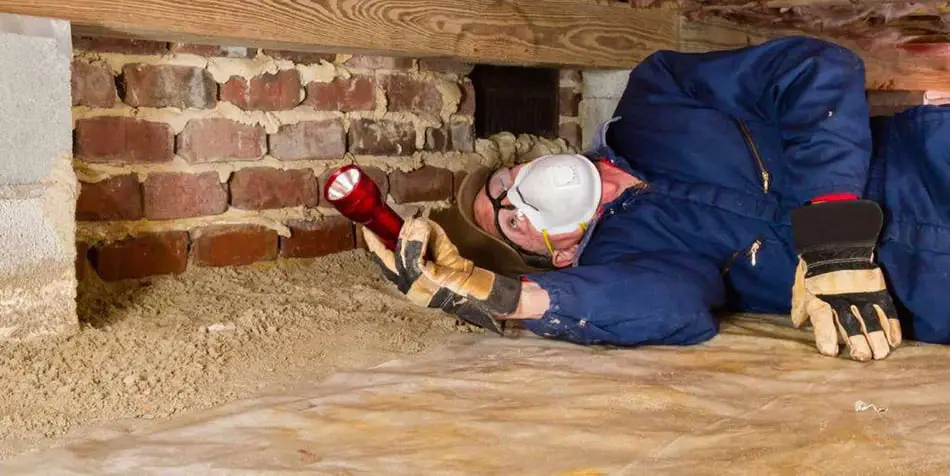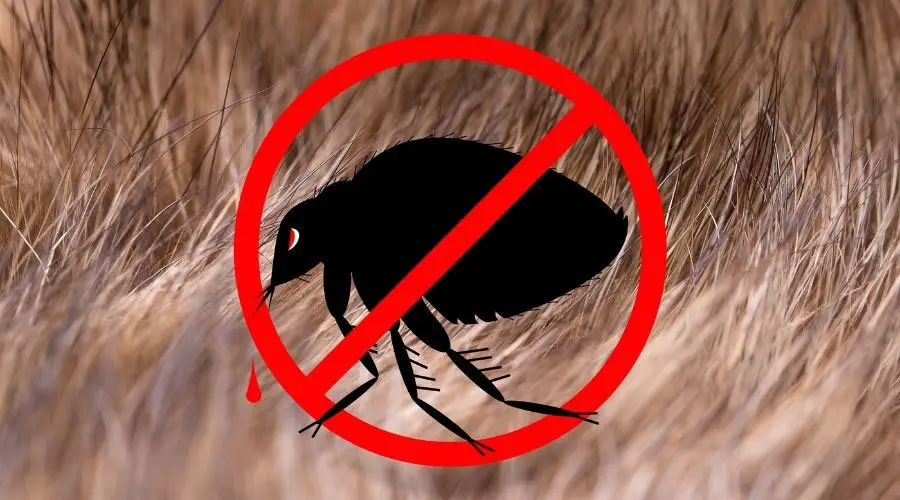
Just the thought of fleas is enough to make us start scratching. Fleas have been a scourge plaguing people for thousands of years. Fleas are not only a nuisance for dogs and cats.
They bite people and cause some nasty diseases among these are the Plague (sometimes known as the Black Plague or Bubonic Plague), flea-borne typhus, and cat-scratch disease.
Fleas harbor tapeworm eggs, and accidentally swallowing a flea can cause someone to become infected with a tapeworm. So if fleas don’t make you quiver, the thought of having a tapeworm surely will. The difficulty comes in trying to get rid of fleas.
Fleas love to hide in nooks and crannies, and a carpet pile provides a perfect habitat. They are incredibly indestructible insects, and their life cycle prolongs the program to eliminate them.
There are 10 ways to get rid of fleas on your carpet:
- Vacuum the carpet
- Steam clean the carpet
- Insecticidal carpet shampoo
- Use insecticides
- Flea bombs/foggers
- Diatomaceous earth
- Carbamate
- Talcum powder
- Baking soda and salt
- Lemon spray
- Essential oils spray
- Flea traps
Get FREE quotes from licensed pest control technicians in your area today. Whether you need spraying for ants, roaches, spiders, ticks, mosquitos, or bed bugs, We Can Help! All technicians are screened, licensed, and insured.
Prevention is best. A multi-pronged approach is needed to get rid of fleas.
This article aims to give you some methods of getting rid of fleas on your carpet. It will include information on insecticides, as well as natural solutions.
We will explain the products’ effectiveness, and the flea life cycle stages the remedy targets. It is always best to prevent fleas from entering your home. We’ll also look at how fleas get into your home, how you know if you have fleas, and how you can prevent them from happening.
An Extensive Extermination Program Is Needed
You cannot exterminate fleas from the carpet without addressing fleas on the animals in your home. It will become a self-defeating exercise. Use flea medication on your animals and repeat it according to the instructions on the medication package.
You will need several months of repeated flea control on your animals before you could think of stopping.
You will also need to treat any soft furnishings in your home for flea infestation. The treatment must include matrasses, curtains, sofas, and bedding. Dog and cat bedding must be included in the extermination program.
The Flea Life Cycle
Adult fleas lay eggs on their hosts. The eggs fall to the ground until they hatch into a white larva, usually between two to twelve days. They have well-developed mouthparts but no limbs.
They consume specks of dried blood, hair, skin cells, and flea feces, turning purplish after their meal. They then crawl into a convenient crack or carpet pile and spin a silky cocoon in which they pupate.
The larva molts within the cocoon to form a white pupa which develops into an adult flea within seven to ten days.
The adult flea is still within the cocoon at this stage and can remain there for many months until conditions are optimal for it to emerge. Warm days with high humidity stimulate the emergence of adult fleas.
The presence of a host can also cause the adult flea to emerge from the cocoon. The adult flea must have a blood meal within the first twenty-four hours of emerging. Once on a host, the flea will begin feeding within ten seconds.
Why Are Fleas So Difficult To Eliminate From A Carpet?
Fleas are difficult to eliminate from a carpet because the carpet structure provides ideal cracks for flea cocoons and fleas to hide.
An adult flea in a cocoon can remain dormant for an extended period. You may think you have conquered the flea problem only to have a fresh batch of fleas emerge as the weather warms or the rains begin.
Many insecticides kill adult fleas but have little or no impact on flea pupa. You may have applied insecticide with great diligence, but the next generation of fleas will appear unless you keep repeating the treatment over several weeks or months.
Nothing is more disheartening than thinking you have won the flea battle, only to discover the reappearance of fleas.
How Do You Know If You Have Fleas In Your Carpet?
Fleas can be difficult to detect in your carpet because the fibers and pile of the rug allow the fleas to hide easily. Most people become conscious that they have a flea infestation when they notice flea bites on their pets or themselves.
You can also detect fleas on pets by inspecting their underside to see if there is flea dirt. Flea dirt is found mainly at the front leg–body junction or groin area. Pets struggling with flea infestation may also have weepy eyes or a rash if they are allergic to flea saliva.
Another trick to check for fleas is to put on white socks and walk on your carpet. Fleas will hop onto your feet and legs and be much easier to see on the white background.
Conventional Ways Of Getting Rid Of Fleas
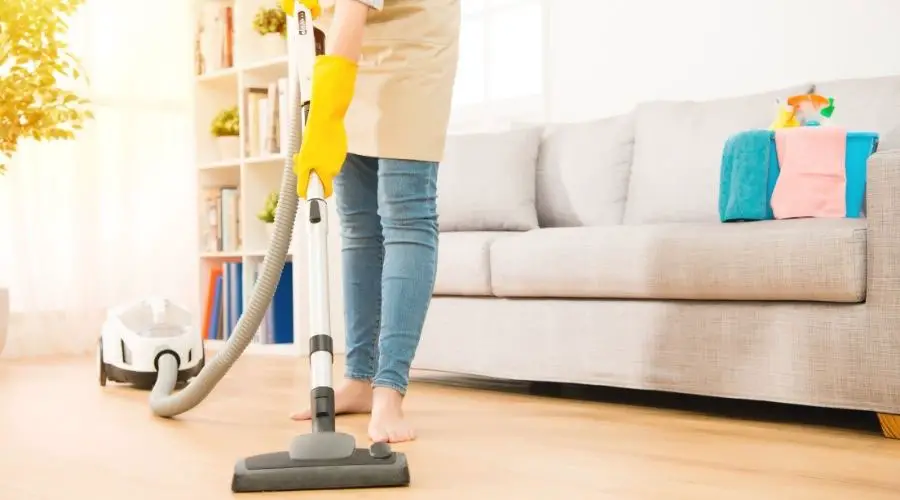
1. Vacuum To Get Rid Of Fleas
A vacuum cleaner is your best defense against fleas. Investing in one with powerful suction is worthwhile if you do not own a good vacuum cleaner. Vacuum your carpet as often as possible.
Daily vacuuming is best, but if you cannot manage this, vacuum at least thrice weekly. Studies have shown that vacuuming can eliminate 30% of the larvae and 60% of the eggs in a carpet.
Some manufacturers produce pet vacuums that have an extra-strong suction for removing fleas from the carpet.
Not only does vacuuming target fleas, but it also helps to remove organic material from the carpet. Remember that organic material such as dead skin cells, hairs, specks of blood, etc., forms the larva’s food. By removing this matter with vacuuming, you remove the larva’s food source, making it difficult for the flea larva to continue its life cycle.
What To Do With Fleas In Your Vacuum Cleaner
Once you have vacuumed, you will have a vacuum cleaner full of fleas, larva, pupa, and eggs. Take your vacuum cleaner outside and remove the bag. If your vacuum cleaner has disposable bags, put the bag into a plastic bag and tie it shut.
You can spray insecticide in the bag before sealing it to kill fleas. Please dispose of the bag in an outside disposal unit or burn it. If you have a vacuum cleaner with disposable bags, empty the bag or dirt canister into another plastic bag and seal that bag.
Use insecticide to spray the inside of your vacuum cleaner bag or canister. You can also wash the bag or canister with boiling water before spraying the insecticide.
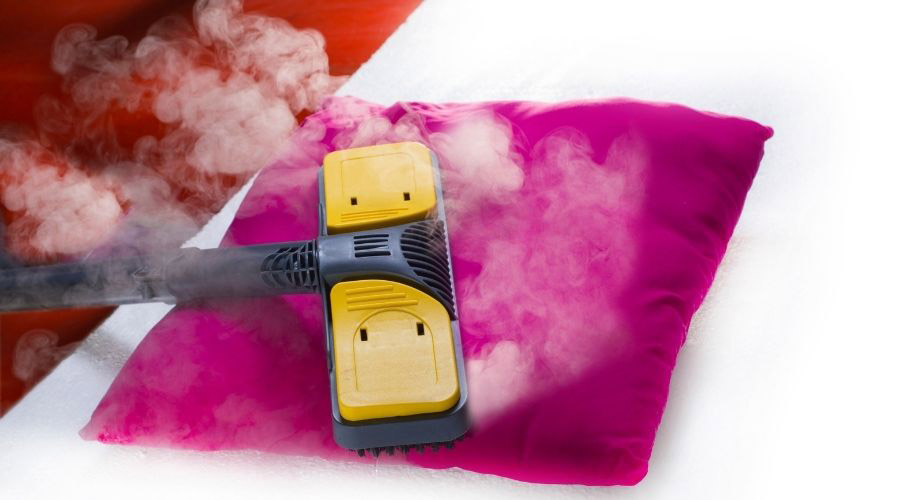
2. Steam Cleaning Your Carpet To Exterminate Fleas
The high heat from the steam, combined with soap in the steam cleaner, will destroy fleas and pupa. You may need to repeat the steam cleaning every three weeks if you have a long-standing or heavy flea infestation.
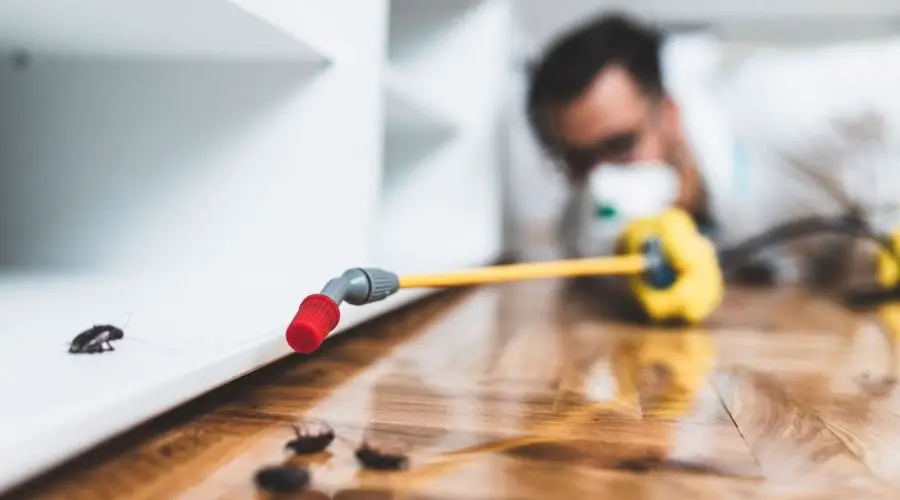
3. Insecticides
You can apply insecticides to the carpet to aid in the elimination of fleas. Remember that most insecticides only work on adult fleas. Insect Growth Regulators (IGR) are substances that interfere with the development of larva and pupa.
Choose insecticides that contain insect growth regulators to use in your home. Insect growth regulators commonly used are Methoprene and Pyriproxyfen. These insecticides will kill adult fleas and prevent the development of the larva and pupa. Insecticides are the fastest and most efficient way to eliminate fleas.
Depending on your insecticidal products, you will need to repeat the treatment regularly for at least three months to eliminate fleas.
Are Insecticides Safe?
Insecticides used to kill fleas are usually safe for mammals. Still, there is always the chance of being allergic to the insecticide or even becoming allergic to it after repeated exposure.
Take precautions to avoid inhaling insecticides. Insect growth regulators are considered safer for mammals than insecticides such as permethrin. Use protection when applying insecticides to your carpet. If you use an aerosol, use a mask to filter out unwanted fumes from entering your lungs.
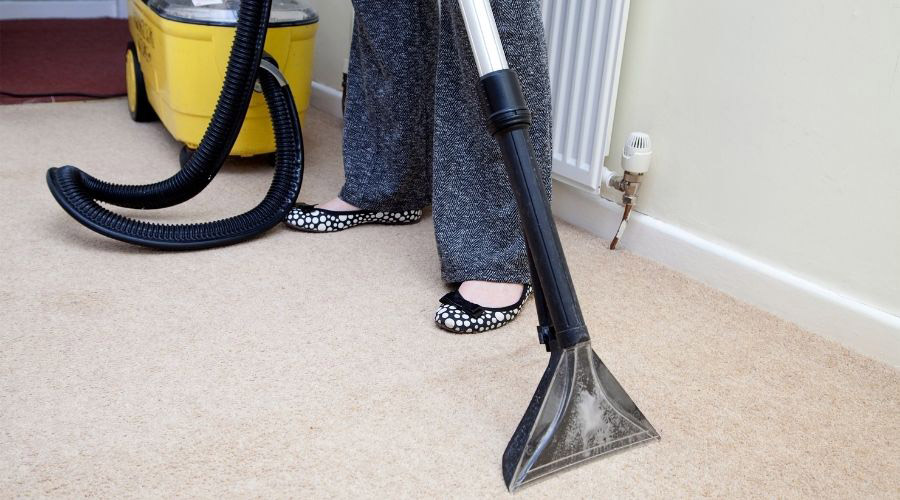
4. Insecticidal Carpet Shampoos
Insecticidal carpet shampoos can be a great way to kill fleas in carpet. You can even use some of these shampoos in a steam cleaner.
Ensure that your rug does not become saturated and unable to dry. The added moisture will only accelerate the hatching of adult fleas from cocoons if the carpet is wet for days.

5. Flea Bombs Or Foggers
Flea bombs or foggers are concentrated insecticides released or sprayed into the carpet of a closed room and left for three to four hours. The best flea bombs or foggers contain insect growth regulators together with an insecticide. This way, the adult fleas, larva, pupa, and eggs are targeted.
Insecticide Safety
It is essential to note that insecticides must follow careful administration regulations to avoid causing health issues. People and pets should be absent from the area during application.
In the case of foggers or flea bombs, people and pets must not enter the room until the stipulated time has passed and space has been aired. Children and people with compromised health are particularly at risk.
Popular Brands To Kill Fleas
- Precor 2625 is a very popular insecticide with an insect growth regulator. This product’s benefit is that it has a residual action for seven months after application to kill any fleas that hatch. It is quick-acting and begins killing fleas immediately.
- Precor 2000 contains similar ingredients to Precor 2625, but it is a handheld fogger. It is safe inside the home, and a single can will treat 1500 square feet.
- Martin’s Insect Growth Regulator is popular for indoor use to interrupt the flea cycle. It is commonly used in conjunction with Fenvastar Ecocap and Excite to kill adult fleas rapidly.
- PT Alpine Flea and Bed Bug Insecticide Aerosol is a handheld spray containing an insect growth regulator. They recommend two applications two to three weeks apart.
Natural Methods Of Eliminating Fleas
Some people do not want to use insecticides in their homes due to health issues or personal preferences. Some people are allergic to insecticides and should not be exposed to them.
Cancer patients undergoing chemotherapy may be particularly susceptible to the effects of insecticides. Natural solutions would be a better alternative to avoid causing a deterioration in their health status.
Insecticides are also particularly problematic when pet birds and babies are in the home. In this case, people prefer to use natural products and solutions to eliminate fleas from carpets.

1. Diatomaceous Earth
Diatomaceous earth consists of 80 – 90% silica. The silica comes from the fossilized remains of tiny aquatic organisms deposited in sediment waterways. The organisms are commonly known as diatoms.
Overall, diatomaceous earth has been used since 1960 to destroy insects and other small organisms. It is abrasive and breaks down the cuticle of the hard exoskeleton of insects.
The powdery nature of the product absorbs the moisture and oils from the insect’s body and, in so doing, kills the insect.
Using Diatomaceous Earth On Your Carpet
Before vacuuming, sprinkle diatomaceous earth on your carpet and rub it in well with a brush. The fleas will begin dying as the diatomaceous earth comes into contact with them.
This method will start to show effect within four hours, but leaving the diatomaceous earth on your carpets for forty-eight hours is better. After this period, vacuum your carpet. It will kill adult fleas and larva but will not affect pupae and eggs.
Is Diatomaceous Earth Safe To Use On Your Carpet?
Diatomaceous earth is non-toxic, but breathing it in can cause lung damage. Studies on mice revealed that long-term exposure to diatomaceous earth predisposed the mice to cancer. Diatomaceous earth works best when it is dry.
Climates with high humidity will make diatomaceous earth ineffective against fleas. The mechanical nature of the fleas’ destruction does not allow the fleas to develop any immunity to diatomaceous earth.
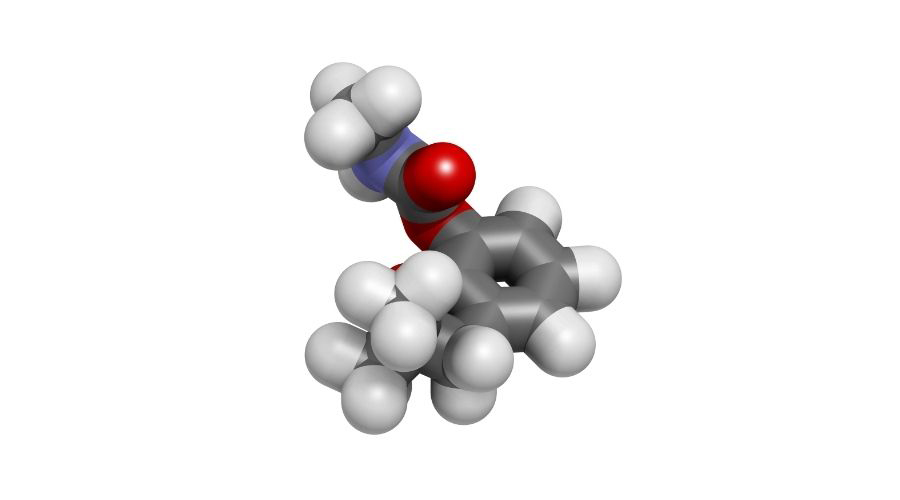
2. Carbaryl (Carbamate)
Carbaryl can be bought at gardening shops or home depots. The carbaryl can be sprinkled on the carpet, left overnight, and then vacuumed. Carbaryl kills fleas by interrupting the nervous system’s functioning.
Carbaryl is relatively safe for humans, but you should keep babies and small children off the carpet when it is covered with carbaryl. It can result in skin irritation and upper respiratory airway issues if inhaled.
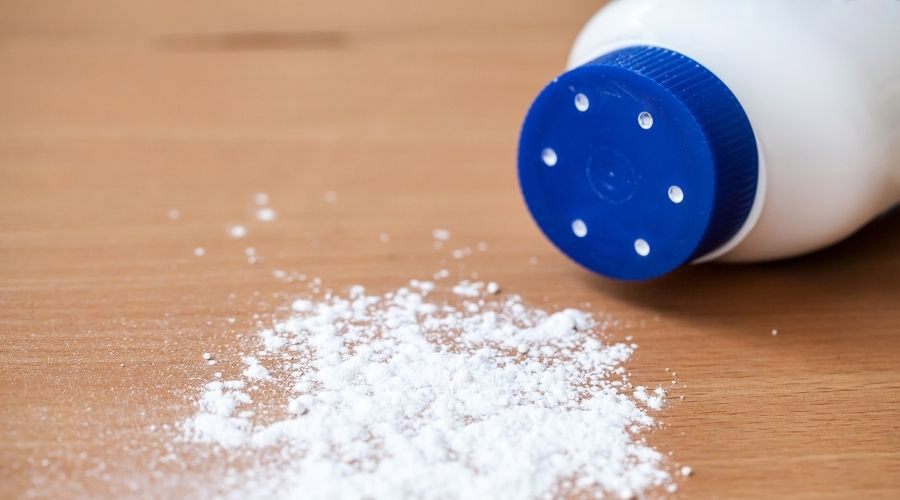
3. Talcum Powder
Talcum powder can kill fleas by suffocating them. Cover the carpet with talcum powder and rub it into the carpet pile. Leave it overnight, and then vacuum the carpet.
The powder will kill adult fleas and larvae, but pupae and eggs will not be affected. Repeat applications will be necessary as fleas emerge from their cocoons.
Be aware when using talcum powder because it is known to cause cancer in some areas. Make sure you take all the precautionary measures if you choose to go down this route.
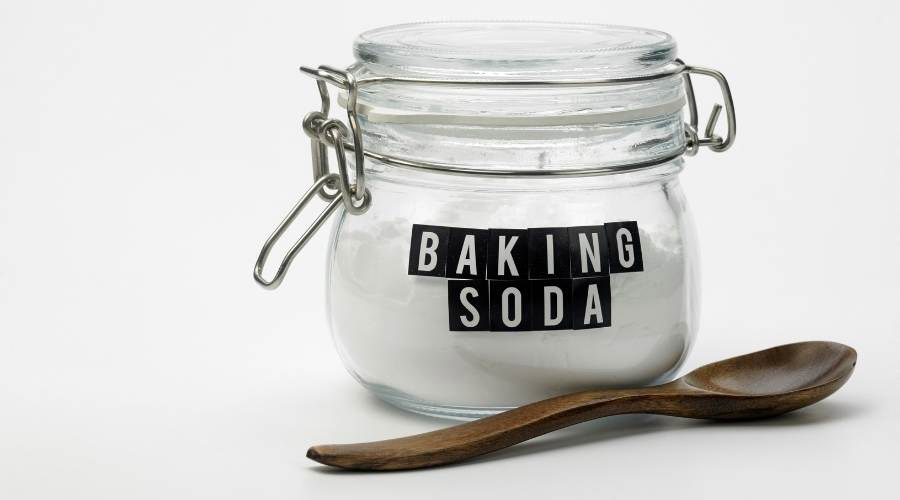
4. Baking Soda Or Salt To Eliminate Fleas In Your Carpet
You can similarly use baking soda or salt for diatomaceous earth. Sprinkle the salt or baking soda on the carpet. Rub the salt and baking soda into the carpet with a brush and leave it on overnight. Vacuum up the baking soda or salt and the dead fleas and eggs.
Some people prefer to mix salt and baking powder in a 50:50 ratio. It is best to use fine salt as it is brushed into the carpet more easily. These products kill the fleas and the larva by dehydration but will not kill eggs or pupae, so they must be applied weekly.
It is usually best to use newly opened baking soda, which has not absorbed any moisture. These are a very safe means of killing fleas.

5. Lemon Spray
The lemon spray is an ancient remedy for repelling fleas. Cut a large lemon into thin slices and simmer it for two hours in a pot. Let the mixture stand overnight, cool, and pour the mixture into a spray bottle.
Spray this onto your carpet. Lemons contain an ingredient called D-Limonene, which repels fleas. Some people like to add one cup of vinegar to the recipe. This recipe is a flea deterrent and will not kill fleas.

6. Essential Oils For Flea Control
People have used plants and planet oils for hundreds of years to control fleas. Although many of these plants and oils will not kill the fleas, they act as flea repellents.
You must use essential oils carefully as they contact the skin in an undiluted form; they can cause skin irritation and chemical burns.
Essential oils can also be toxic and cause severe allergic reactions that may cause permanent damage. Do not apply pure, undiluted essential oils to your carpet, as they may be accidentally transferred onto the skin of animals or family members.
Here is a list of some essential oils you can use to repel fleas away:
Dilute these oils in a base oil such as coconut oil, grape seed oil, olive oil, sweet oil, avocado oil, or castor oil.
Use ten drops of the diluted oil in a pint of water with two tablespoons of lemon juice or apple cider vinegar. Put the essential oil mixture in a spray bottle and spray the carpet.

7. Flea Traps For Carpets
Flea traps are made by mixing a 1 to 10 mixture of dishwashing liquid with water and placing this solution in a shallow container. Containers are situated at various places on the carpet.
The fleas jump into the containers and cannot escape the water’s high surface tension caused by the dishwashing liquid. This method catches some fleas, but unfortunately, it is a slow and arduous process, so not for use if you want quick results. Some people use this method to determine if fleas are present on the carpet.
Commercial flea traps are available, but they are not much more sophisticated than dishwasher traps. They kill only a tiny percentage of the flea population. So the benefits of purchasing and using them are dubious.
Prevention Is Preferable When It Comes To Fleas
Fleas can be frustrating and challenging to eliminate once they have taken hold in your home. It is a lot of work and diligent application of insecticides and deterrents to get rid of pesky insects. The better option is to prevent fleas from entering your home.
Pets & Fleas
Pets can pick up fleas from garden areas, the dog park, or even from your home if you have pests. Fleas can cause allergic dermatitis, seborrhea, tapeworm, and heartworm infestation in pets. Young pets can suffer from anemia from a severe flea infestation.
The fleas suck so much blood that the body cannot produce sufficient red blood cells to replace those removed by the fleas. It is better to use flea prevention for your pets.
There is a large variety of flea prevention for pets. This includes tablets taken at monthly intervals, flea collars, spot-on-flea control, powders, and shampoos. Bathing your pet will also help control fleas.
Rat & Mice Infestations Bring Fleas
Rats and mice in your home are common sources of flea infestations. The rodents enter your home through any small gap in the house’s structure.
They must be dealt with before you even think of gaining ground in eliminating fleas. If there are rats and mice, they will bring more into the home as quickly as you kill the fleas.
If you have roof rats, you may need to consider fogging the ceiling-roof space in your house to eradicate the fleas once the rats are gone.
Birds Nesting In The Eaves Or Roof Bring Fleas
Birds nesting in the eaves or roof of your home may be another source of fleas. It would be advisable to contact a wildlife rescue agency to remove birds from your house roof.
Once the birds are removed, you will need to close all the openings where the birds might nest and not return. You can use tightly rolled chicken mesh to push into the gaps under the roof.
Flea Repellent Plants
You can plant flea repellent plants around your home to deter fleas in the garden. These include rosemary, lavender, lemongrass, chrysanthemums, garlic, and onions.
Grass Length & Fleas
Long grass provides the damp hiding places that fleas love to frequent. Keep your grass cut short to reduce the possibility of fleas taking over your garden and infesting your pets.
Wood Chip Mulching
Cedarwood and eucalyptus chips can be used as mulches in the garden to deter fleas from areas that might attract them. You can use these chips where your pets like to lie, which will help keep the fleas away.
Carbaryl And Diatomaceous Earth Prevent Fleas In The Garden
Carbaryl (Carbamate) and diatomaceous earth sprinkled around the garden help discourage fleas from the garden. Using them will benefit your plants by keeping other pests away.
Conclusion
There are a variety of methods to eliminate fleas from your carpets. Two critical tools in your fight against fleas are a vacuum cleaner and a steam cleaner. Insecticides with insect growth regulators are the quickest method of eliminating fleas.
You may likely need to repeat the application a second time due to the flea’s ability to become dormant and hatch at a time when conditions are right. The insect growth regulators control the hatching, but a few fleas may escape extermination, necessitating a second application.
You can use other products, but many of them kill only the adult flea and the larvae and do not affect the pupae or eggs. This necessitates many repeated applications of the product regularly.
It is necessary to treat pets and all soft furnishings when treating the carpet. Flea bombs or foggers help treat large areas.
Get FREE quotes from licensed pest control technicians in your area today. Whether you need spraying for ants, roaches, spiders, ticks, mosquitos, or bed bugs, We Can Help! All technicians are screened, licensed, and insured.


